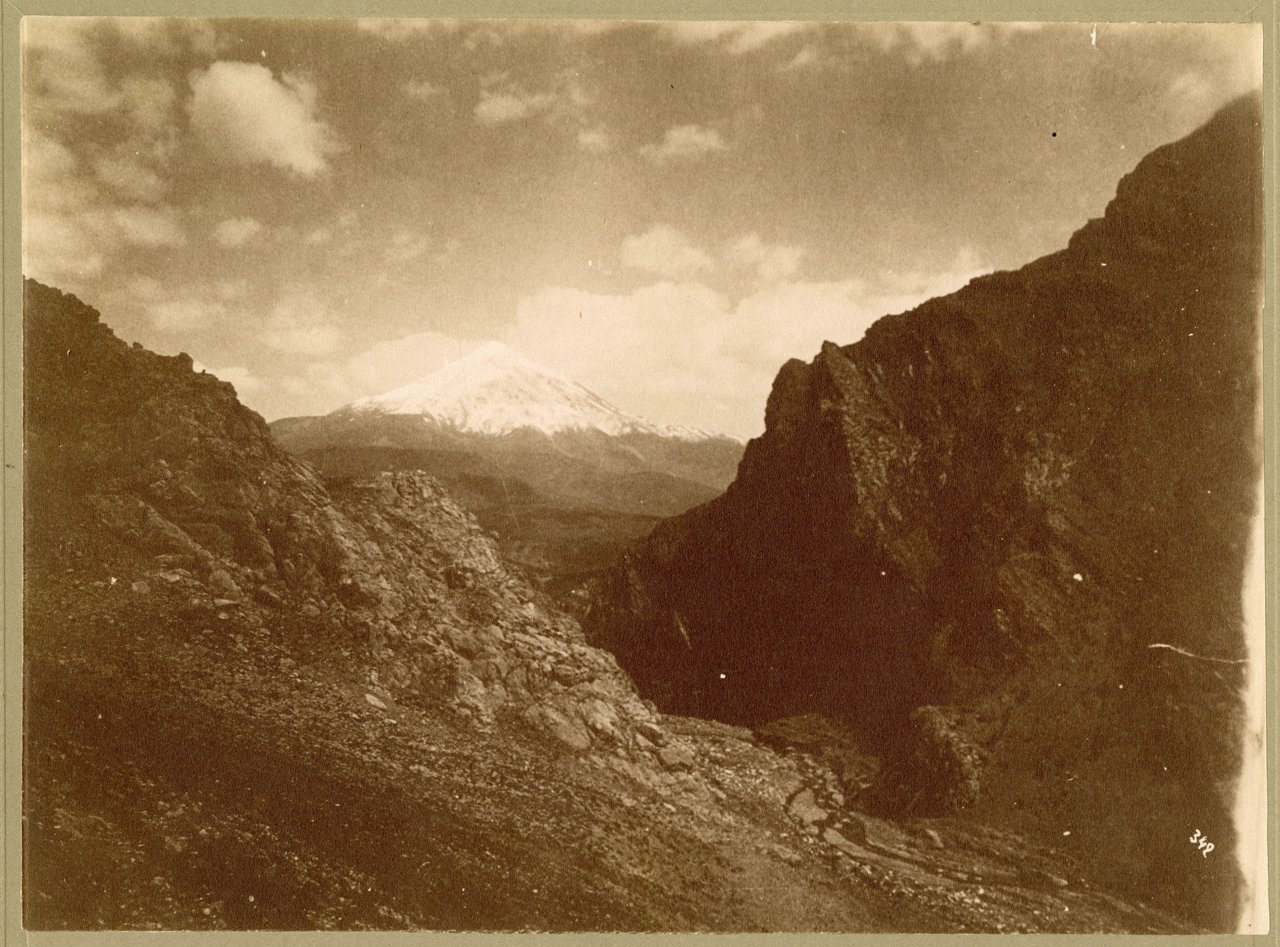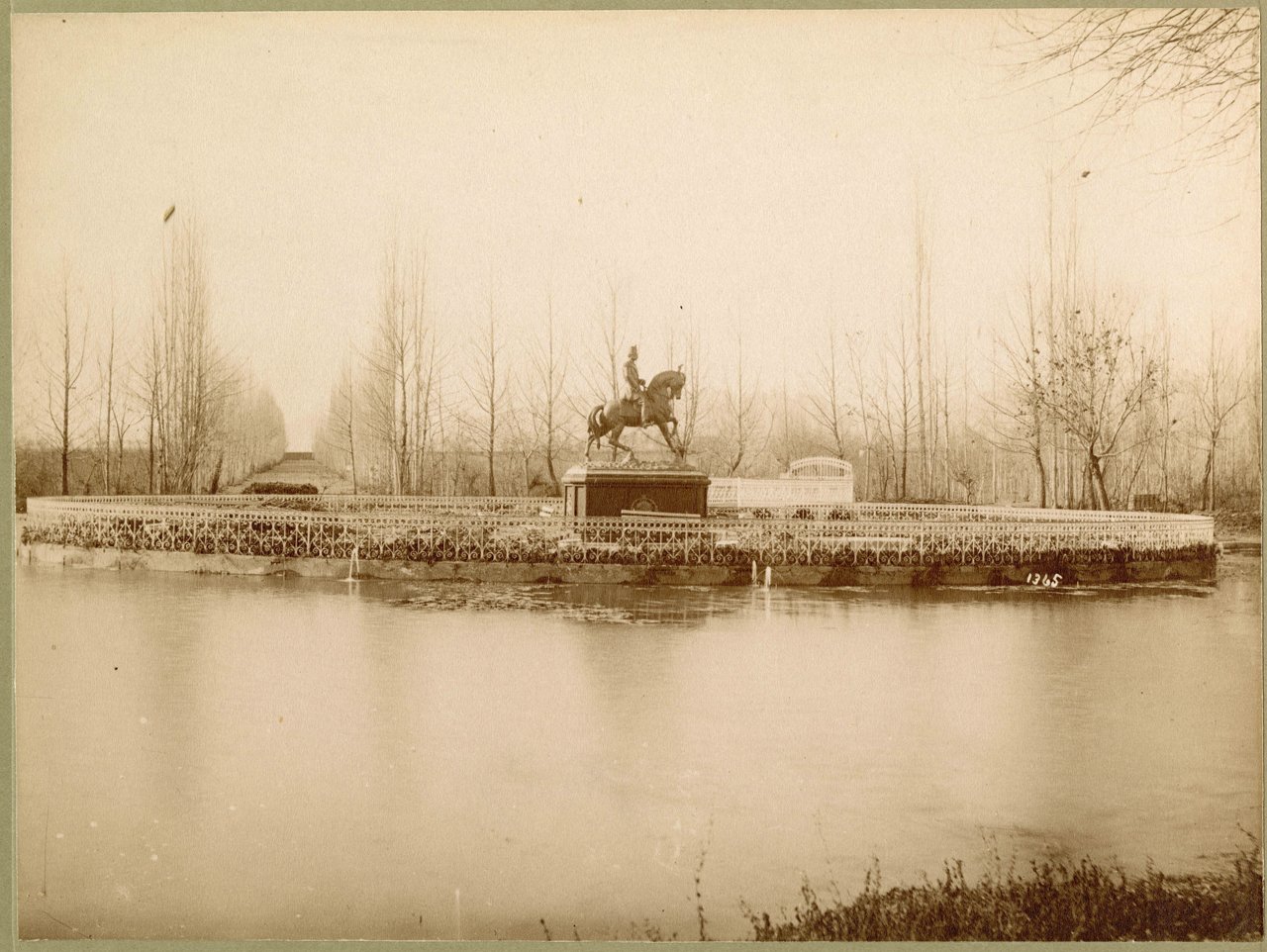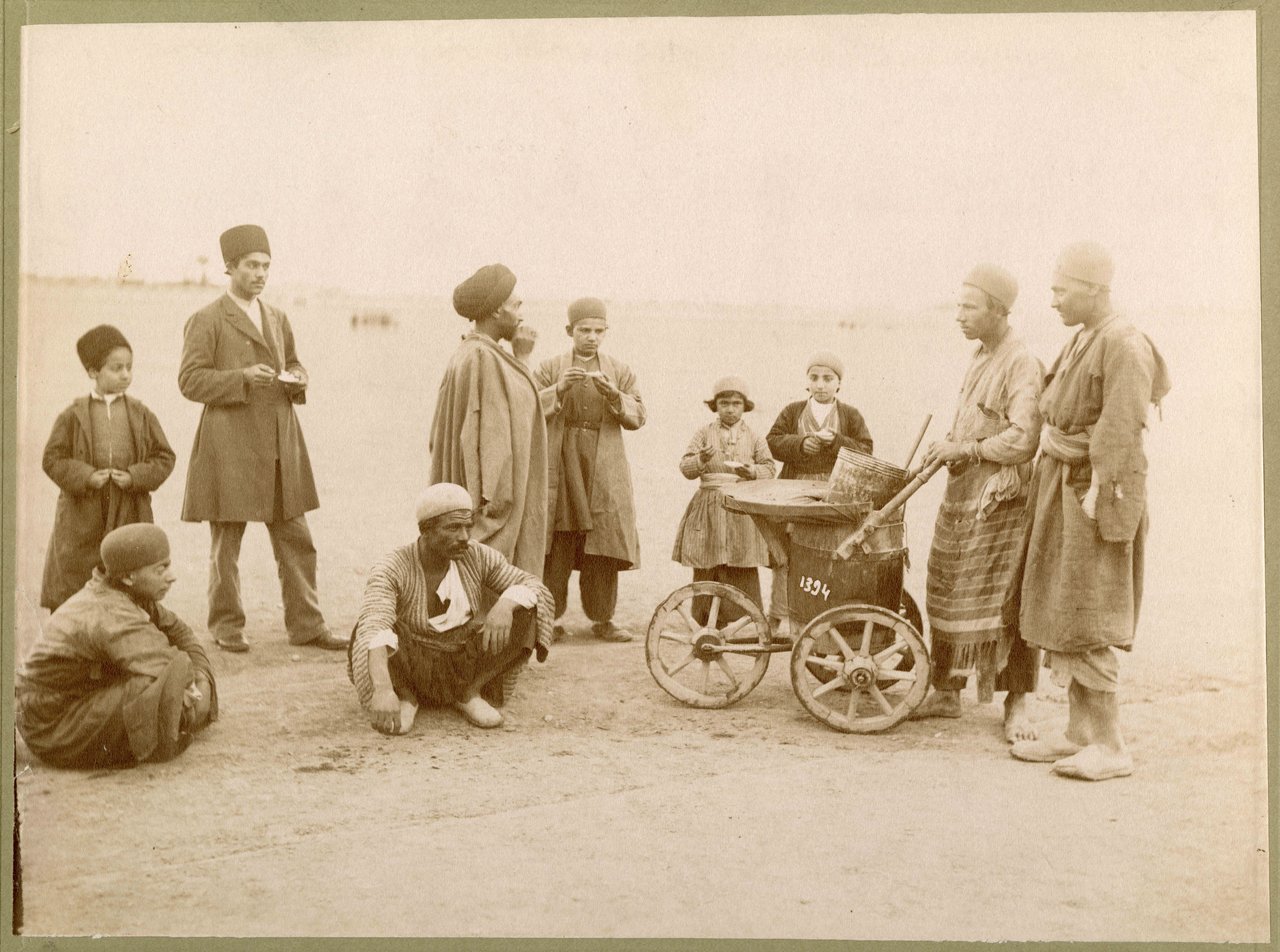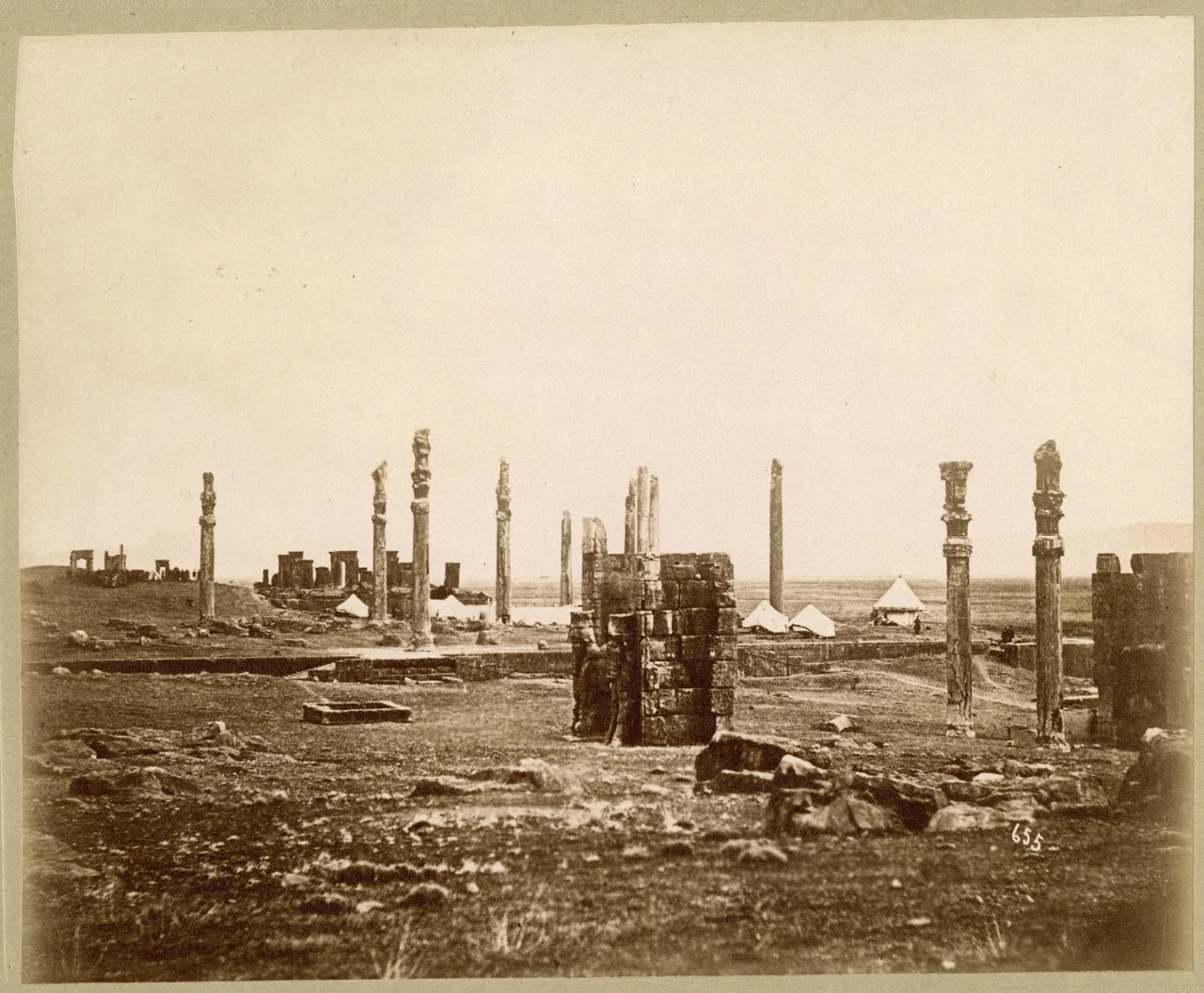Antoin Sevruguin: Past and Present
“Persepolis,” Antoin Sevruguin. Not on view.
Please note, “Antoin Sevruguin: Past and Present,” is no longer on view.
by Tasha Vorderstrasse, University and Continuing Education Program Coordinator and Curator of Antoin Sevruguin: Past and Present
When we look at old photographs, we often feel a sense of distance from the people pictured in them. Not only are the images in black and white but the people in them often stand or sit stiffly staring grimly ahead, giving us no sense of what their actual lives must have been like. On the other hand, the work of Antoin Sevruguin (ca. 1851–1933), which is currently on display at the Oriental Institute Museum Antoin Sevruguin: Past and Present through December 23 (as well as virtually online), shows us how photography can create photographs that still resonate with us today. They give us a vivid idea of what life was like in Qajar, Iran in the 19th-century and create a sense of place.
Antoin Sevruguin was born in Iran, but his family originally came from the Russian Empire. His father was a Russian diplomat and after he died, the family returned to the Russian Empire to live when Sevruguin was still a child. They first lived in Tiflis (now Tbilisi, in modern Georgia), and then Agulis (now in Nakhchivan, Azerbaijan), before Sevruguin returned to Tiflis to pursue painting, which became crucial to the way he pursued his ultimate career, photography. For reasons that are unclear, Sevruguin eventually decided however to become a photographer. In the later part of the 19th century, photography was a popular pursuit in the region and there were many local photographers throughout the Russian, Qajar, and Ottoman empires. While photography was a French invention, it was enthusiastically adopted in the region and many photography studios emerged in the late 19th century to supply the local and tourist markets. Antoin Sevruguin studied photography with Dmitri Ermakov, who himself had worked in Iran. In the 1870s, he decided to leave the Russian Empire and return to Iran, establishing a photography studio first in Tabriz in the northwest of the country and ultimately in its capital, Tehran. Sevruguin settled permanently in Iran, marrying into the Armenian-Iranian community in Iran, and ultimately died of kidney failure in 1933.




Armenian Women and Girls, Antoin Sevrugin.
Antoin Sevruguin was an extremely successful photographer, becoming one of the court photographers to the Qajar ruler, Nasir al-Din Shah (1848–1896). Himself a keen amateur photographer, Nasir al-Din Shah promoted photography as a valuable propaganda tool. He understood that photography would be a useful mechanism for helping people to see the Iran that Nasir al-Din Shah wished them to see. Sevruguin also was widely collected by foreign visitors to Iran, including the collector of the OI photographs, Mary Clarke, who was working in the country as a Protestant missionary. The result of the popularity of his pictures means that many of the Sevruguin photographs in museums around the world are copies of the same pictures. Sevruguin was interested in documenting all aspects of life in Iran, meaning that he took pictures of the landscape of Iran, its ancient and modern monuments, the royal family, and its people. He was probably the most famous 19th century Iranian photographer.
In the selection of the types of categories that he photographed, Sevruguin fit very much within what was popular in the late 19th century when foreign and local photographers documented the Middle East and North Africa. Where he differed, was how he took the photographs and what he photographed. First, while Sevruguin did take pictures of the different ethnic and religious groups in Iran, he photographed them in a much more personal way. His subjects stare intently at the camera, and he creates a sense of connection between the viewer and the subject. They are not simply anonymous photographs, but photographs of actual people, even if it is likely that these people are not in the clothes, they would have necessarily worn everyday but are rather wearing "typical" dress of whatever group they are supposed to be representing. Indeed, we know from other cases in the 19th century that people simply dressed up in clothing and were not necessarily of that particular religious or ethnic group, even if they were purported to be. Such pictures represented a popular interest in the 19th century, that of looking at depictions of different ethnographic types.
“Dervish,” Antoin Sevrugin. Image not included in exhibition.
Sevruguin also was not afraid to document a modern Iran. This may not seem particularly innovative now, but it went against how Iran and other regions were viewed by outsiders at the time. While tourists visiting Iran saw the country as unchanging and wished to emphasize its antiquity, Sevruguin photographed all aspects of Iranian society, including its modernization. He did not see Iran as being frozen in time. This means that in the collection we have a glimpse into a changing society, and we see modern aspects of life such as trains and tramways alongside more traditional life. This means that we have a more complete picture of late 19th century Iran, thanks to Sevruguin's desire to show all aspects of the country, not simply the ones that would be popular with foreign tourists.
Further, the images themselves are very carefully composed. Sevruguin used his artistic background to stage his scenes. He had people stand in very specific ways, facing different directions, which adds an interesting depth to his pictures. In his picture of Armenian women and girls, for instance, one of the women has their back to us, which is entirely unexpected, while others stand in the different positions that contrast with usual photographs made at the time. Such an approach reminds us of paintings, which is probably where Sevruguin started to understand the importance of where and how his subjects stand or sit.
“Antoin Sevruguin: Past and Present shows us how photography can create photographs that still resonate with us today. ”
Sevruguin also recognized the importance of lighting. In his outdoor pictures, Sevruguin tried to minimize shadows, which allow the viewer to concentrate on the scene itself. He took pictures at noon and he also used sheets to try to help with the lighting. Even in these outdoor pictures, Sevruguin still pays close attention to composition. In many of his pictures of groups, his subjects do not look directly at the camera, or only a few actually do. The others look at each other or in different directions. He also tries to create a sense of infinite numbers of individuals by carefully arranging a small number of people who appear to be part of a larger group. It is also evident that he was not afraid of negative space and takes photographs where there is a lot of empty space in them, which again is extremely eye-catching. All of this once again emphasizes how Sevruguin directed each of the photographs that he took and clearly thought a lot about the different aspects of how the picture would be viewed.
While Sevruguin was a very successful and famous photographer, his work largely faded into obscurity until a resurgence of scholarly interest starting in the 1990s. The OI's collection of photographs were donated in 1901. The vast majority of the photographs can be identified as being taken by Antoin Sevruguin, with a few by other photographers, only some of whom can be identified. The OI collection of 152 albumen prints were conserved as part of the exhibition, thanks to a generous grant from the American Institute of Iranian Studies. The OI exhibition itself mostly consists of reproduction prints with a small number of originals exhibited, for conservation reasons.
To read more about Antoin Sevruguin and his photographs, as well as to view a complete catalog of the OI collection, you can download the free exhibition catalog.



